Embarking on the journey of sewing a peasant dress opens up a world of creativity and self-expression. This versatile garment, known for its loose, comfortable fit and timeless appeal, is an excellent project for beginners and seasoned seamstresses.
Crafting your peasant dress allows you to choose the fabric, style, and length, creating a piece that reflects your unique taste.
In this guide, we’ll walk through the steps, offering detailed insights and helpful tips to ensure a successful sewing experience.
From selecting the right materials to mastering essential techniques, you’ll soon have a charming, handmade peasant dress ready to grace any occasion.
What Is A Peasant Dress?
A peasant dress is a loose-fitting, comfortable garment characterized by its simple, often flowing design. Originating from traditional rural attire, it has transcended time and fashion eras to become a versatile style statement.
Typically made from lightweight fabrics like cotton or linen, it features a gathered or elasticized neckline, sometimes accompanied by puffed sleeves and a billowy, unstructured silhouette that falls freely around the body.
This dress exudes a bohemian, down-to-earth charm, making it a popular choice for casual, outdoor settings or relaxed social occasions.
Its timeless appeal lies in its adaptability; it can be dressed with accessories for a more polished look or kept casual for a carefree, laid-back vibe.
The peasant dress embodies an effortless, rustic elegance that resonates across various fashion landscapes.
How to Sew a Peasant Dress? 9 Steps
Sewing a peasant dress is a delightful and satisfying project for beginner and experienced seamstresses.
Peasant dresses are known for their comfortable, loose-fitting style with a bohemian charm, whether you’re creating a dress for a special occasion or casual everyday wear.
Here’s a step-by-step guide on how to sew a peasant dress.
Materials You’ll Need:
- Fabric.
- Sewing Machine or Needle and Thread.
- Scissors
- Pins
- Measuring tape
- Elastic.
- Safety pin
Steps to Sew a Peasant Dress:
Step 1: Take Measurements
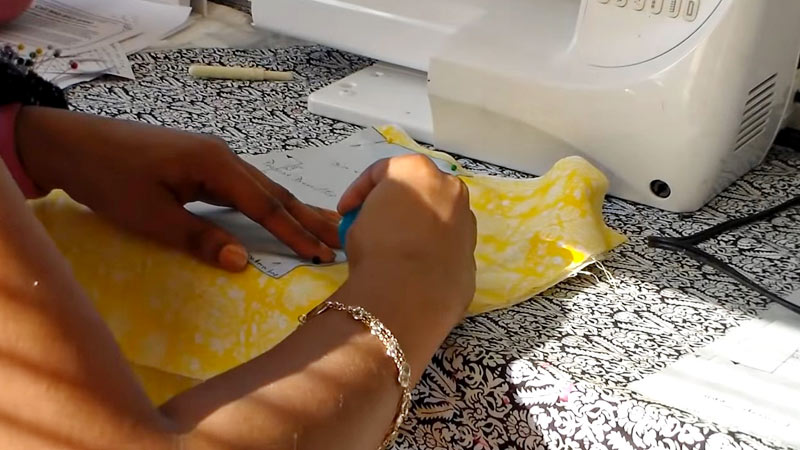
Wrap a soft, flexible measuring tape around the fullest part of your bust, ensuring it’s snug but not tight. Repeat this process for your waist and hips.
Write down these measurements to refer to later. Additionally, consider the desired length of your dress. Do you want it to fall just above the knee or slightly longer?
Step 2: Cut the Fabric
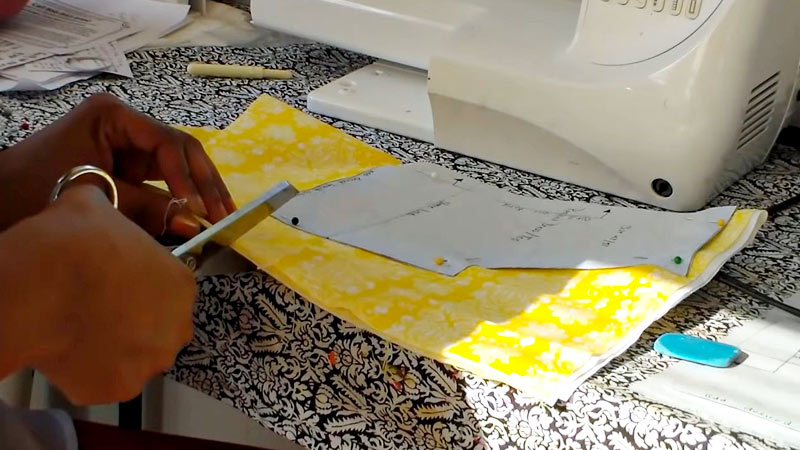
Gently fold your chosen fabric in half, aligning the selvage edges neatly. Ensure that the right sides of the fabric are facing each other. Using fabric chalk or a washable fabric pen, mark out the pieces you’ll need:
For the Front and Back Panels, measure and mark the fabric accordingly. The width should be half of your bust measurement, plus a little extra for seam allowances. As for the length, it should match your chosen dress length plus seam allowances.
For the sleeves, cut two rectangular pieces. Their width should correspond to your desired sleeve length, and the length should match your arm circumference plus seam allowances.
Step 3: Sew the Side Seams
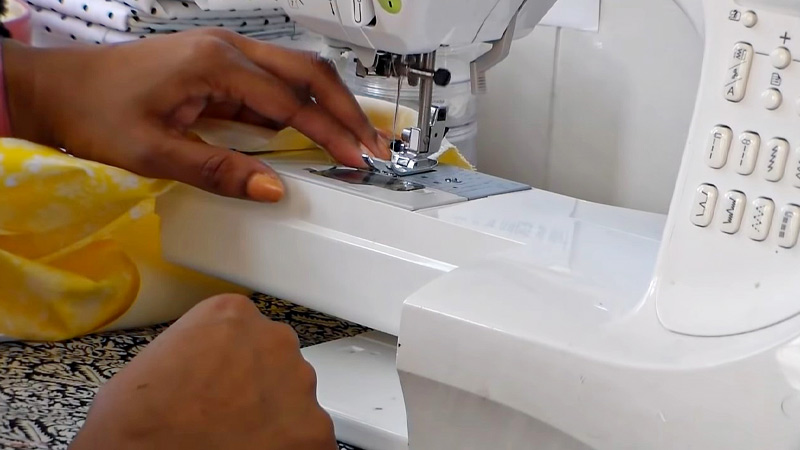
With the right sides of the fabric together, align the side edges of the front and back panels. Use straight pins to secure them in place. Take your time to ensure the edges are evenly matched.
Now, carefully sew along these side seams using either your trusty sewing machine or a needle and thread.
Remember to leave approximately 1 inch from the top for the elastic casing and about 10 inches from the bottom for side slits. Once the seams are sewn, gently press them open with a hot iron.
Step 4: Create Elastic Casings
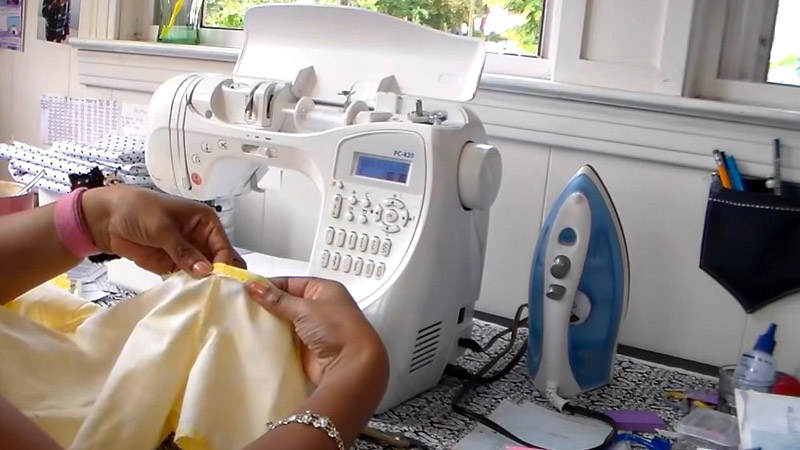
This step will give your dress a neat, finished look. Fold over the top edge of your dress fabric by about 1 inch, ensuring it’s even all around. Secure it in place with straight pins. This creates casings for the neckline and waist.
Next, using your sewing machine or a hand-sewing needle, stitch along the bottom edge of each casing. Remember to leave a small opening in each casing to insert the elastic later.
Step 5: Insert Elastic
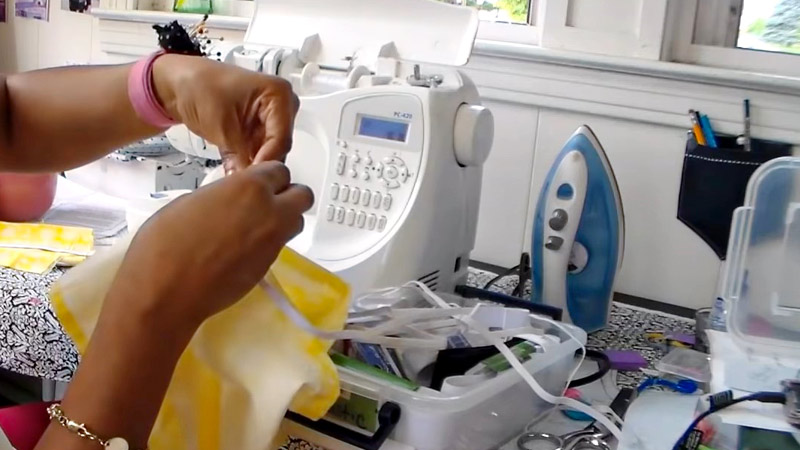
Now, it’s time to add some elasticity for a comfortable fit. Measure and cut pieces of elastic for both the neckline and waist.
Use your earlier measurements as a guide. Attach a safety pin to one end of the elastic, making guiding it through the casing easier.
Gently thread the elastic through the casing until it reaches the other end. Secure the ends of the elastic together by sewing or knotting them, and then close up the casing.
Step 6: Attach Sleeves
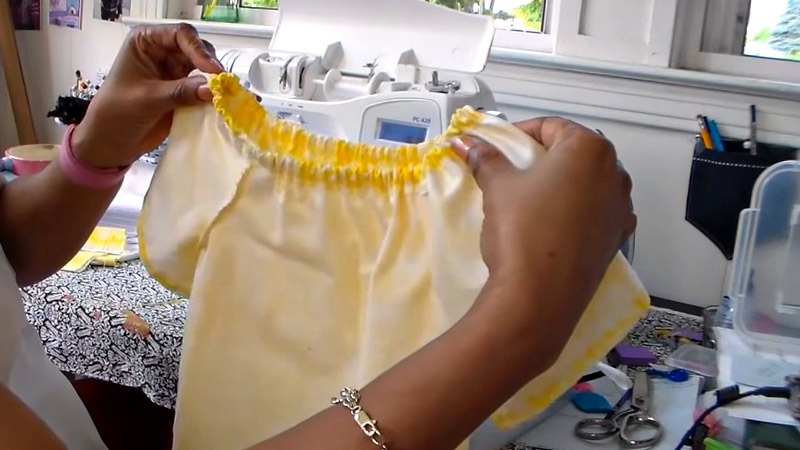
Begin by folding the sleeve pieces in half lengthwise, aligning the raw edges evenly. Then, sew along this raw edge to create a tube. To gather one end of each sleeve, sew a basting stitch, ensuring the stitches are long and loose.
Slowly pull the thread to gather the fabric, creating a subtle gathering effect. Pin the gathered edge of the sleeves to the armholes of the dress. Make sure the right sides face each other, then sew them in place.
Step 7: Hem the Dress
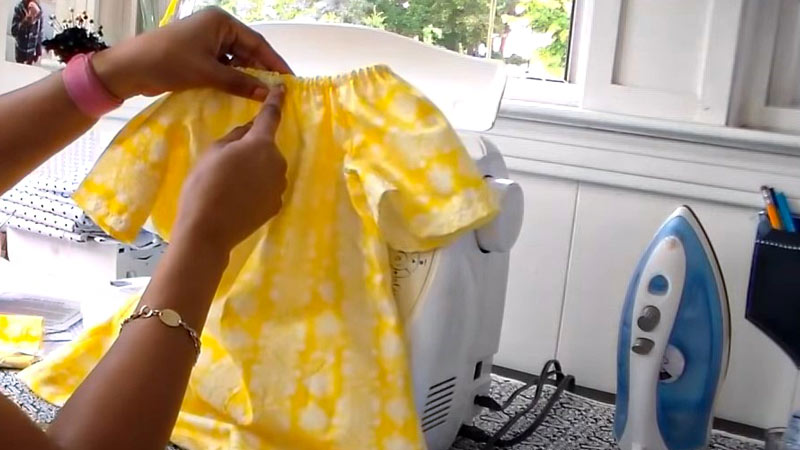
To give your dress a polished finish, fold up the bottom edge of the fabric by about 1 inch. Press it firmly in place with an iron. Then, carefully sew the hem in place using your sewing machine or needle and thread.
Step 8: Finish the Sleeves
For a clean, professional look, fold the raw edge of each sleeve over by about 1/2 inch. Press it down firmly with an iron. Finally, sew along this folded edge to create a clean sleeve finish.
Step 9: Final Touches
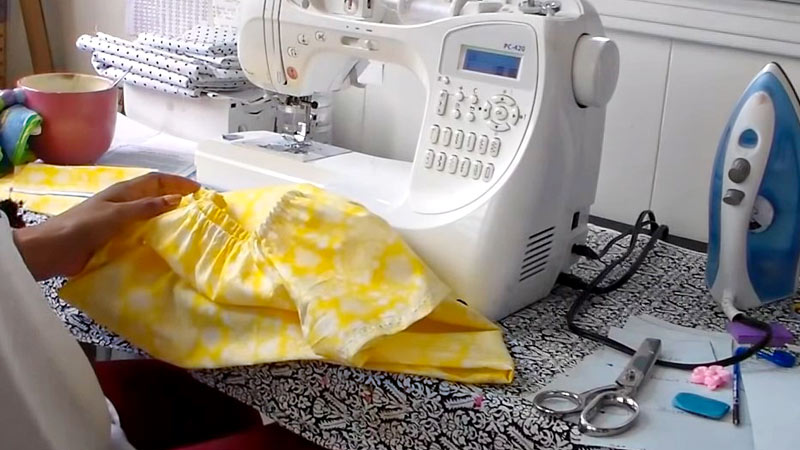
Take a moment to inspect your dress for any loose threads or uneven seams. Trim away any excess threads with a sharp pair of scissors. Give your dress a final press with an iron to smooth out any wrinkles or creases.
Some Variations of Peasant Dress
The peasant dress has evolved, and various cultural influences and modern interpretations have given rise to several interesting variations.
Here are some notable ones:
Bohemian Peasant Dress
The Bohemian peasant dress is a celebration of artistic expression and free-spirited style. It embraces rich, earthy tones and vibrant hues, often incorporating intricate embroidery, tie-dye patterns, or paisley prints.
The silhouette is loose and flowy, allowing for comfortable movement. Layered skirts, ruffles, and tassels are common features, giving it a playful and dynamic feel.
Mexican Peasant Dress
Originating from Mexico, the Puebla dress symbolizes Mexican heritage and craftsmanship.
Its defining features include a square neckline, often adorned with colorful floral embroidery known as “puntadas,” and wide, puffed sleeves. The fabric is lightweight and breathable, making it well-suited for warm climates.
Provence Peasant Dress
Hailing from the picturesque Provence region of France, this variation exudes a timeless and elegant charm.
The dress often features clean lines and a modest silhouette. The natural and light fabrics reflect the region’s appreciation for simplicity and comfort.
Renaissance Peasant Dress
Inspired by the opulence and romance of the Renaissance era, this variation is characterized by its attention to historical detail.
Corset-style bodices and laced-up fronts create a fitted upper silhouette, while layered skirts and voluminous sleeves add drama and flair.
Gypsy Peasant Dress
Drawing from the rich tapestry of Romani culture, the Gypsy peasant dress is a fusion of vibrant colors, bold patterns, and eclectic fabrics.
Layers of flowing material, often in contrasting prints, create a sense of visual intrigue. Tassels, coins, and other embellishments are frequently used to add a touch of nomadic charm.
Modern Boho Peasant Dress
A contemporary interpretation of the traditional peasant dress, the modern boho version combines eclectic elements with modern fabrics and design sensibilities. It may feature a mix of prints, textures, and unconventional details.
Tips for Successfully Sewing Peasant Dress
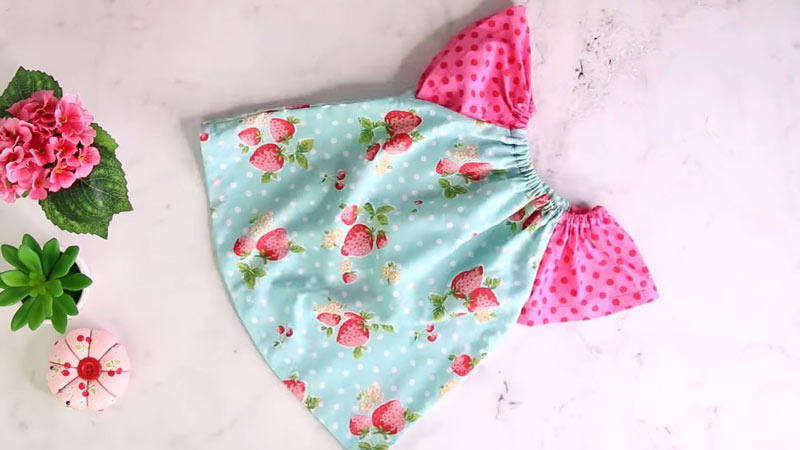
Creating a peasant dress can be a rewarding sewing project, but following some tips is essential to ensure a successful outcome.
Whether you’re a novice or an experienced seamstress, here are some valuable pointers to help you along the way:
Choose the Right Fabric
Selecting the appropriate fabric is crucial. Consider not only the look but also the feel of the material. Cotton, linen, and blends are popular for peasant dresses due to their breathability and ease of manipulation.
Prewash Your Fabric
Before cutting and sewing, washing and ironing your fabric is imperative. This step eliminates any potential shrinkage or distortion after the dress is completed.
Select the Correct Pattern Size
Consult the pattern’s sizing chart to determine the most suitable size for your measurements. If you fall between sizes, opt for the larger one; you can always adjust later for a better fit.
Use the Right Needle and Thread
For lightweight fabrics, a fine needle and an appropriate thread are essential. A universal needle and polyester thread are safe bets for most peasant dress fabrics.
Take Your Time Cutting
Precision during the cutting phase is paramount for a well-fitted dress. Utilize sharp scissors or a rotary cutter, and double-check all measurements and markings before making any cuts.
Press Seams Open
After sewing the side seams, take the time to press them open with an iron. This simple step contributes to a clean finish and enhances how the dress drapes.
Experiment with Embellishments
Elevate your dress by incorporating embellishments like lace, ribbon, or embroidery. These personal touches add a unique flair and allow you to infuse your style into the garment.
Test Elastic Length
Before attaching the elastic, it’s prudent to test its length around your neckline, waist, and sleeves. The elastic should offer a snug fit without feeling uncomfortably tight.
Gather with Care
When gathering fabric for sleeves or skirts, employ long, loose stitches. Gently pull the threads to avoid any breakage. Distribute the gathers evenly for a balanced look.
Finish Edges Neatly
Employ techniques like serging, zigzag stitching, or French seams to prevent fraying along the edges. This ensures durability and imparts a polished finish to your dress.
Check Fit as You Go
Regular fittings throughout the sewing process are essential. Trying on the dress at different stages helps identify fit issues early, allowing for timely adjustments.
Be Patient and Take Breaks
Sewing is a meticulous craft. Taking regular breaks to rest your eyes and hands is crucial. Rushing through any step can lead to mistakes that may be difficult to rectify later.
FAQS
What fabric is best for a peasant dress?
Lightweight, breathable fabrics like cotton, linen, or cotton blends work well for peasant dresses.
Can I sew a peasant dress by hand, or need a sewing machine?
You can sew a peasant dress by hand, but a sewing machine will make the process faster and more efficient.
How do I create the elastic casings for the neckline and waist?
Fold over the fabric edge by about 1 inch, then sew along the bottom edge of each casing, leaving a small opening to insert the elastic.
What’s the best way to gather the sleeves for a peasant dress?
Sew a long, loose basting stitch along the edge and gently pull the thread to gather the fabric.
How can I ensure a well-fitting peasant dress?
Take accurate measurements of your bust, waist, and hips before cutting the fabric. This ensures a dress that fits comfortably and flatters your body shape.
To Wrap Up
In bringing your peasant dress to life, you’ve crafted a garment and woven a tale of creativity and skill. Measuring, cutting, and sewing have culminated in a unique piece that mirrors your style and vision.
Embracing the loose, timeless charm of the peasant dress, you’ve imbued it with your personal touch. As you step back and admire your handiwork, take pride in the stitches that bind fabric and imagination.
This dress is a testament to your craftsmanship, a wearable, comfortable, and chic artistry. With each graceful drape, you’ll wear a dress and a piece of your artistry.
Leave a Reply